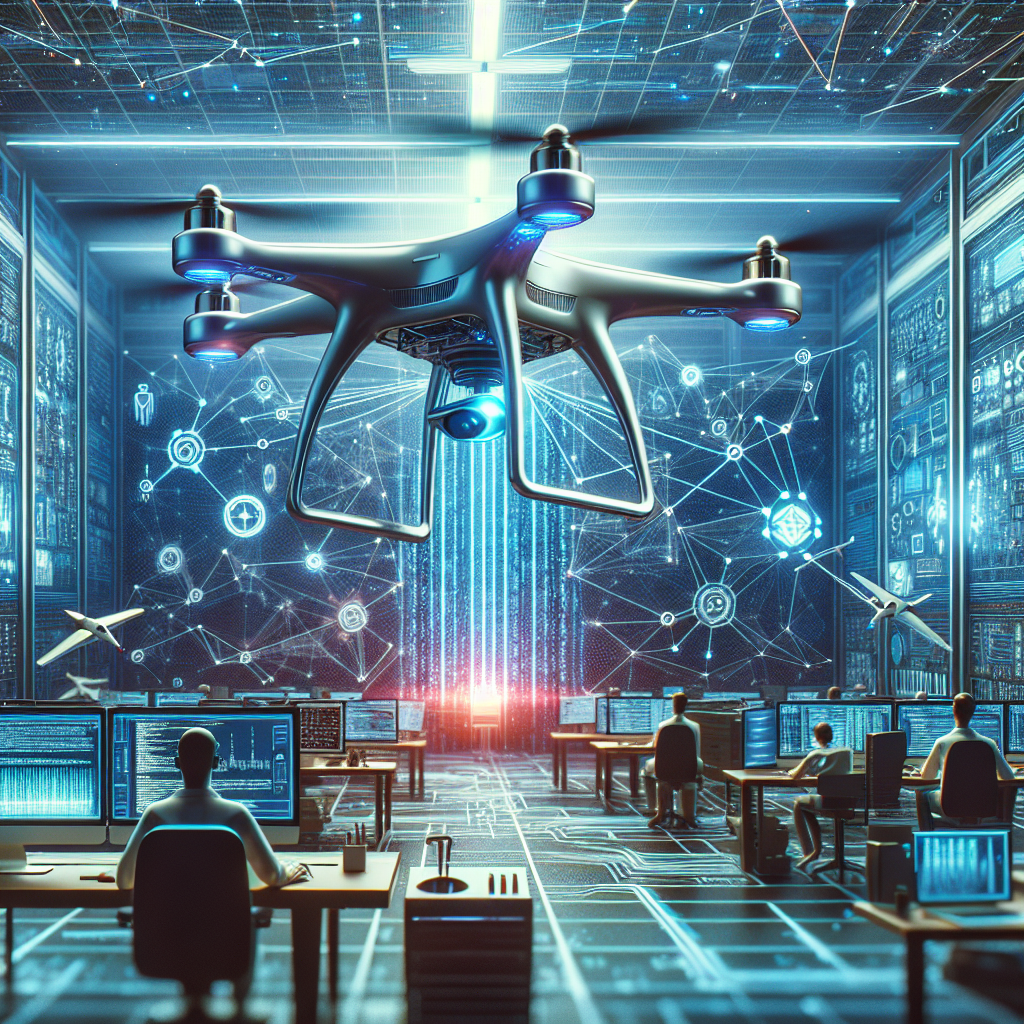The Impact of AI-driven Solutions on Autonomous Drones
Autonomous drones have become increasingly popular in recent years, with applications ranging from surveillance and security to agriculture and delivery services. These drones are able to operate without human intervention, using a combination of sensors, cameras, and GPS technology to navigate their surroundings and complete tasks. One of the key components enabling this autonomy is artificial intelligence (AI)-driven solutions.
AI-driven solutions have revolutionized the capabilities of autonomous drones, allowing them to perform more complex tasks with greater efficiency and accuracy. In this article, we will explore the impact of AI on autonomous drones and how it is shaping the future of unmanned aerial vehicles (UAVs).
Enhanced Navigation and Obstacle Avoidance
One of the key benefits of AI-driven solutions for autonomous drones is enhanced navigation and obstacle avoidance capabilities. Traditional drones rely on pre-programmed flight paths or manual control to navigate, which can be limiting in dynamic and unpredictable environments. AI algorithms, on the other hand, allow drones to make real-time decisions based on their surroundings, adjusting their flight path to avoid obstacles and reach their destination safely.
These AI algorithms use a combination of sensor data, computer vision, and machine learning to analyze the drone’s surroundings and make decisions on the fly. For example, a drone equipped with AI-driven obstacle avoidance technology can detect and avoid obstacles such as trees, buildings, or other drones in its path, ensuring a smooth and safe flight.
Improved Efficiency and Accuracy
AI-driven solutions also improve the efficiency and accuracy of autonomous drones in performing tasks such as surveillance, mapping, and inspection. By analyzing large amounts of data in real-time, AI algorithms can quickly identify patterns, anomalies, or objects of interest, allowing drones to make informed decisions and take appropriate action.
For example, in agriculture, AI-driven drones can analyze crop health data collected from sensors and cameras to identify areas of disease or pest infestation, enabling farmers to take targeted action to protect their crops. In construction, drones equipped with AI-powered mapping software can create detailed 3D models of building sites, helping project managers track progress and identify potential issues before they become costly problems.
AI-driven solutions also improve the accuracy of autonomous drones in completing tasks such as package delivery or search and rescue missions. By analyzing sensor data and using machine learning algorithms, drones can navigate complex environments with greater precision, ensuring that packages are delivered to the correct location or that missing persons are located quickly and safely.
Challenges and Opportunities
While AI-driven solutions offer numerous benefits for autonomous drones, there are also challenges that need to be addressed. One of the main challenges is the need for robust and reliable AI algorithms that can operate effectively in a variety of environments and conditions. Drones must be able to adapt to changing weather, lighting, and terrain conditions, as well as navigate crowded urban areas or remote wilderness regions.
Another challenge is the integration of AI-driven solutions with existing drone technology and regulations. As AI becomes more prevalent in autonomous drones, there is a need for standardized protocols and guidelines to ensure the safety and security of drone operations. This includes issues such as data privacy, cybersecurity, and ethical considerations related to AI decision-making.
Despite these challenges, the impact of AI-driven solutions on autonomous drones is expected to be significant. The combination of AI and drone technology opens up new opportunities for applications in areas such as disaster response, environmental monitoring, and transportation. As AI algorithms continue to improve and drones become more sophisticated, we can expect to see even greater advancements in the capabilities of autonomous drones.
FAQs
Q: How does AI improve the navigation of autonomous drones?
A: AI algorithms analyze sensor data and use computer vision and machine learning to make real-time decisions about the drone’s flight path, enabling it to navigate complex environments and avoid obstacles.
Q: What are some of the applications of AI-driven solutions in autonomous drones?
A: AI-driven solutions are used in applications such as surveillance, agriculture, delivery services, construction, and search and rescue missions, among others.
Q: What are some of the challenges of integrating AI with autonomous drones?
A: Challenges include the need for reliable AI algorithms that can operate in various conditions, as well as issues related to data privacy, cybersecurity, and regulatory compliance.
Q: What are some of the future advancements we can expect in AI-driven autonomous drones?
A: Future advancements may include improved efficiency and accuracy in completing tasks, as well as new applications in areas such as disaster response, environmental monitoring, and transportation.
In conclusion, AI-driven solutions have had a significant impact on the capabilities of autonomous drones, enabling them to perform more complex tasks with greater efficiency and accuracy. As AI technology continues to evolve, we can expect to see even greater advancements in the field of autonomous drones, opening up new opportunities for applications in various industries. By addressing the challenges and opportunities presented by AI-driven solutions, we can harness the full potential of autonomous drones and revolutionize the way we interact with the world around us.

